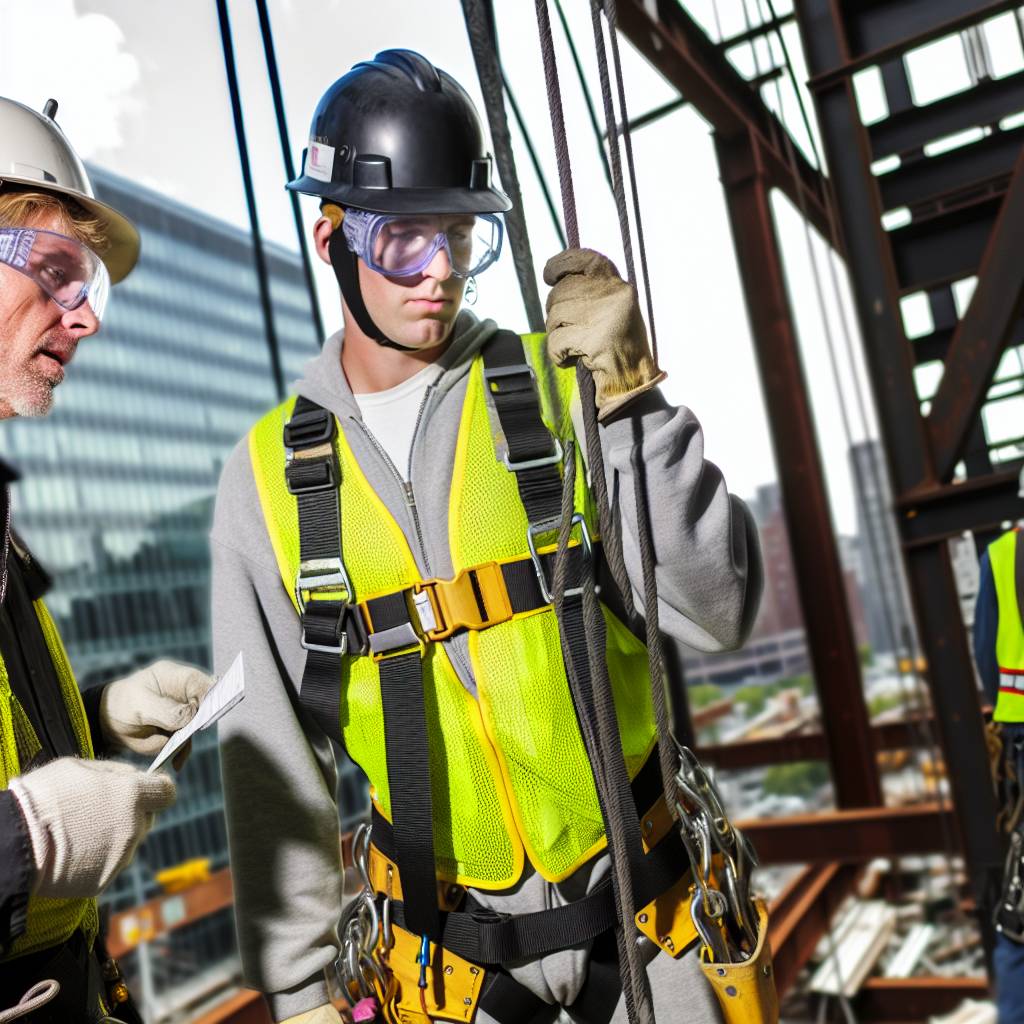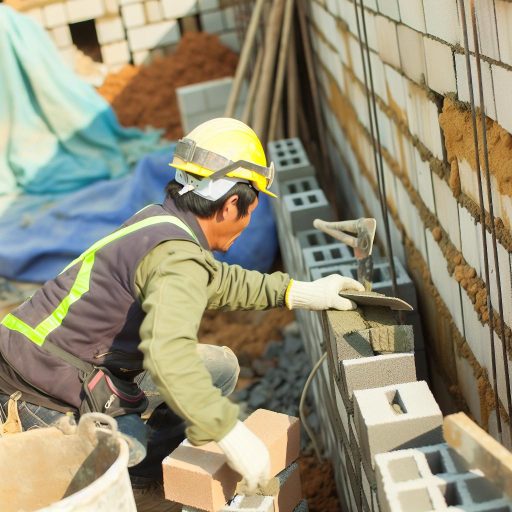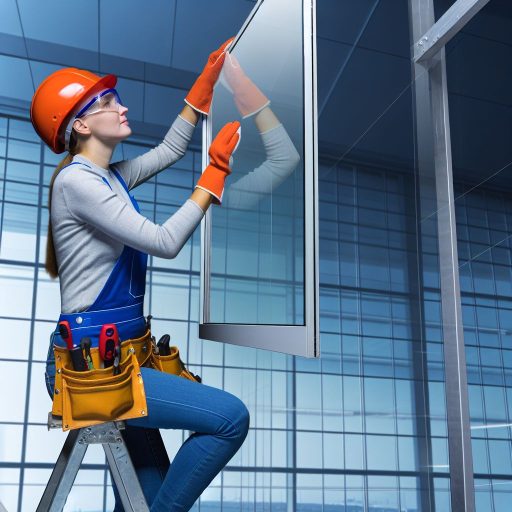Introduction:
In the ironworking industry, safety regulations and compliance standards are crucial for ensuring the well-being of workers.
Adhering to these regulations is not just a legal requirement, but also a moral obligation to protect workers from harm.
This blog post will delve into the significance of safety regulations and compliance standards in ironworking.
Brief Overview:
Safety regulations in the ironworking industry are put in place to prevent accidents and maintain a safe work environment.
Compliance with these standards is essential to reduce the risk of injuries and fatalities among ironworkers.
Purpose of the Blog Post:
The purpose of this post is to educate and raise awareness about the importance of safety regulations and compliance standards.
By highlighting these crucial aspects, we aim to emphasize the significance of safety in the ironworking industry.
Overview of OSHA regulations for ironworkers
Ironworkers play a critical role in the construction industry.
However, with great power comes great responsibility.
That is where OSHA, the Occupational Safety and Health Administration, steps in to ensure these workers are protected at all times.
Key safety guidelines and requirements set by OSHA for ironworkers
- Personal Protective Equipment (PPE): Ironworkers must wear the appropriate PPE, including hard hats, gloves, and safety harnesses, to minimize the risk of injury on the job.
- Fall Protection: Ironworkers are often working at heights, so OSHA requires the use of fall protection systems such as guardrails, safety nets, or personal fall arrest systems.
- Training: OSHA mandates that ironworkers receive proper training on equipment operation, hazard recognition, and emergency procedures to prevent accidents.
- Inspections: Regular inspections of equipment and worksites are essential to ensure safety compliance and identify potential hazards before they become accidents.
Importance of adhering to OSHA regulations to ensure worker safety
Adhering to OSHA regulations is not just a legal requirement; it is a matter of life and death.
By following these regulations, ironworkers can:
- Prevent injuries and fatalities on the job.
- Create a safer work environment for themselves and their colleagues.
- Avoid costly fines and penalties from OSHA for non-compliance.
OSHA regulations for ironworkers are in place to protect their well-being and ensure their safety on the job.
By understanding and following these guidelines, ironworkers can continue to build our cities and infrastructure while staying safe and healthy.
Common hazards faced by ironworkers on job sites:
Working at heights without proper fall protection equipment.
Structural collapses due to improper inspection of the building’s stability.
Hazards related to heavy machinery such as cranes and forklifts.
Discussion of potential risks such as falls, structural collapses, and hazards related to heavy machinery:
Ironworkers are exposed to the risk of falls from elevated surfaces.
This can result in serious injuries or fatalities.
It is essential for them to use fall protection systems like harnesses, guardrails, and safety nets to prevent such accidents.
Transform Your Career Today
Unlock a personalized career strategy that drives real results. Get tailored advice and a roadmap designed just for you.
Start NowStructural collapses can occur if the ironwork is not properly installed, inspected, or maintained.
Ironworkers must be trained to identify signs of instability and report them immediately to prevent any accidents.
Operating heavy machinery like cranes and forklifts pose a significant risk to ironworkers.
If proper safety protocols are not followed, accidents can occur.
A thorough inspection of the equipment, training on its operation, and constant vigilance are crucial in preventing accidents.
Importance of identifying and mitigating these hazards to prevent accidents and injuries:
Safety should be the top priority on any construction site to protect the well-being of ironworkers.
Identifying potential hazards and implementing appropriate safety measures can prevent accidents before they occur.
Mitigating risks through thorough inspections, proper training, and adherence to safety standards ensures a safe working environment for ironworkers.
Prevention of accidents not only saves lives but also reduces the financial burden on companies due to workplace injuries.
Compliance with safety regulations and standards is essential to protect the health and safety of workers.
Legal risks for employers can also be mitigated through compliance.
Explore Further: How Glaziers Contribute to Energy-Efficient Buildings
Training Requirements for Ironworkers
Ironworkers are required to undergo specific training programs to ensure their safety and the safety of others on the job site.
This training is crucial in preventing accidents and maintaining compliance with safety regulations.
Necessary Certifications for Ironworkers
- OSHA 10-Hour Construction Safety Course: This certification equips ironworkers with the basic knowledge of construction safety.
- Fall Protection Certification: Ironworkers must undergo training on how to properly use fall protection equipment to prevent accidents.
- Rigging and Signal Person Certification: This certification is necessary for ironworkers who are responsible for rigging and signaling during lifts.
- Welding Certification: Ironworkers who perform welding tasks must have the appropriate certification to ensure their competency in this skill.
Training Programs for Ironworkers
- Apprenticeship Programs: These programs provide a combination of on-the-job training and classroom instruction to prepare ironworkers for the demands of the job.
- Continuing Education Courses: Ironworkers need to participate in ongoing training to stay updated on safety standards and best practices in the industry.
- Specialized Training: Some ironworkers may need specific training based on the type of projects they work on, such as bridge construction or high-rise buildings.
Importance of Ongoing Training
Ironworkers must continuously seek further education and training to stay current with safety regulations and best practices in the industry.
This ongoing training helps prevent accidents and ensures that ironworkers are equipped to handle any challenges they may face on the job.
By investing in ongoing training, ironworkers can enhance their skills, stay up-to-date with safety standards, and continue to make valuable contributions to their companies.
Additionally, ongoing training can lead to career advancement opportunities for ironworkers and help them stay competitive in the industry.
Training requirements for ironworkers are essential for maintaining a safe work environment and ensuring compliance with safety regulations.
Ongoing training is a crucial component of this process and plays a significant role in keeping ironworkers safe and effective on the job site.
Transform Your Career Today
Unlock a personalized career strategy that drives real results. Get tailored advice and a roadmap designed just for you.
Start NowGain More Insights: The Future of Construction Management
Personal Protective Equipment (PPE) Requirements for Ironworkers
One of the most critical aspects of ironworker safety regulations is the proper use of personal protective equipment (PPE).
PPE is essential for protecting ironworkers from potential hazards and injuries on the job site.
Explanation of Specific PPE Items Required for Ironworkers
- Hard Hats: Ironworkers are required to wear hard hats at all times to protect their head from falling objects or debris.
- Safety Harnesses: Ironworkers working at heights must wear safety harnesses to prevent falls and injuries.
- Gloves: Ironworkers need to wear gloves to protect their hands from cuts, burns, or other injuries while handling materials or tools.
Importance of Wearing Proper PPE to Reduce the Risk of Injuries on the Job
Wearing proper PPE is crucial for ironworkers to minimize the risk of injuries and accidents on the job site.
By following PPE requirements, ironworkers can protect themselves from various hazards and ensure their safety and well-being.
Failure to wear the necessary PPE can result in severe injuries, disabilities, or even fatalities.
Ironworkers are exposed to numerous risks, such as falls, struck-by hazards, electrical shocks, and more.
Therefore, wearing the right PPE is non-negotiable.
Hard hats protect ironworkers’ heads from impact injuries due to falling objects or debris.
Safety harnesses prevent falls from heights, which are one of the leading causes of injuries in the construction industry.
Gloves provide hand protection against cuts, burns, and other hazards.
Complying with PPE requirements is not just a matter of regulation; it is a matter of personal safety and responsibility.
Ironworkers must understand the importance of wearing proper PPE and prioritize their safety above everything else.
Employers play a crucial role in ensuring that ironworkers have access to adequate and properly fitting PPE.
They must provide training on the correct use and maintenance of PPE and enforce compliance with safety regulations and standards.
Ironworkers should inspect their PPE regularly and replace any damaged or worn-out items.
They should also be aware of the specific PPE required for different tasks and environments, and they should never compromise on safety.
Overall, wearing proper PPE is non-negotiable for ironworkers.
It is not just a rule to follow, but a mindset to adopt to ensure their safety and well-being on the job.
By prioritizing safety and compliance with PPE regulations, ironworkers can significantly reduce the risk of injuries and create a safer work environment for everyone.
Transform Your Career Today
Unlock a personalized career strategy that drives real results. Get tailored advice and a roadmap designed just for you.
Start NowYou Might Also Like: How to Paint Outdoor Furniture for Durability

Compliance standards for ironwork companies
Ironwork companies must adhere to strict compliance standards to ensure the safety of their workers.
These standards are put in place to reduce the risk of accidents and injuries on the job site.
Ironwork companies are required to follow regulations set forth by OSHA (Occupational Safety and Health Administration) and other governing bodies.
These regulations cover everything from fall protection to proper equipment maintenance.
Discussion of the responsibilities of employers to provide a safe work environment for ironworkers
Employers play a crucial role in ensuring that ironworkers are provided with a safe work environment.
It is the responsibility of the employer to implement safety protocols, provide proper training, and enforce compliance with regulations.
Employers must also ensure that all equipment is properly maintained and regularly inspected.
They should provide adequate safety gear and address any safety concerns raised by their workers promptly.
Explanation of the consequences of non-compliance with safety regulations and standards
Non-compliance with safety regulations and standards can have serious consequences for ironwork companies.
It can result in fines, penalties, lawsuits, and even criminal charges in severe cases.
Moreover, non-compliance can lead to accidents, injuries, and even fatalities.
This not only puts the lives of ironworkers at risk but also tarnishes the reputation of the company and can lead to significant financial losses.
Uncover the Details: How to Estimate Costs for Roofing Projects
Resources for ironworkers to stay informed about safety regulations
Ironworkers face numerous hazards in their line of work.
Staying informed about safety regulations is crucial to ensuring their well-being.
For ironworkers looking to access resources to stay up-to-date on safety standards, there are a variety of websites, organizations, and publications that provide valuable updates and information.
Websites
-
OSHA’s website: The Occupational Safety and Health Administration (OSHA) website is a valuable resource for ironworkers to access information on safety regulations, standards, and best practices.
-
NIOSH: The National Institute for Occupational Safety and Health (NIOSH) website offers research, guidelines, and tools to improve workplace safety for ironworkers.
-
AIHA: The American Industrial Hygiene Association (AIHA) website provides resources, training, and news on occupational safety and health.
Organizations
-
Iron Workers International: The Iron Workers International union is dedicated to promoting safety and training for ironworkers.
-
ASSP: The American Society of Safety Professionals (ASSP) is a professional organization that provides valuable resources and information on safety standards.
-
CSHO: The Construction Safety Council (CSHO) is committed to promoting safety in the construction industry.
Publications
-
Construction Executive: This publication covers industry news, trends, and safety topics related to the construction sector.
-
Safety and Health Magazine: This publication focuses on occupational safety and health topics to promote workplace wellness and safety.
-
Ironworker Magazine: The official publication of the Iron Workers International union provides updates on safety regulations, industry news, and best practices for ironworkers.
Importance of staying informed and educated on safety regulations to prioritize worker safety
Staying informed and educated on safety regulations is essential for ironworkers to prioritize worker safety and prevent accidents or injuries on the job.
By actively seeking resources, updates, and training opportunities related to safety standards, ironworkers can enhance their knowledge, skills, and awareness of potential hazards in their work environment.
It is important for ironworkers to understand and comply with safety regulations to create a safe and secure work environment.
Transform Your Career Today
Unlock a personalized career strategy that drives real results. Get tailored advice and a roadmap designed just for you.
Start NowBy staying informed about the latest standards and best practices, ironworkers can mitigate risks, protect themselves and their colleagues, and contribute to a culture of safety in the construction industry.
Furthermore, continuous education and training on safety regulations can improve the efficiency, productivity, and overall well-being of ironworkers.
By being proactive in seeking information and resources on safety standards, ironworkers can enhance their professionalism, reputation, and job satisfaction while reducing the likelihood of accidents or incidents that can impact their health and livelihood.
Safety Regulations for Ironworkers
Ironworkers must follow safety regulations to prevent accidents and injuries on construction sites.
Compliance Standards
Compliance with safety standards ensures a safe working environment and reduces the risk of incidents.
Key Safety Regulations
- Fall protection must be provided for ironworkers working at heights to prevent falls.
- Ironworkers should wear proper personal protective equipment (PPE) like helmets and harnesses.
- Safe work practices, such as proper lifting techniques, must be followed to avoid injuries.
- Regular inspections of equipment and tools should be conducted to ensure safety.
- Ironworkers must receive adequate training on safety protocols and emergency procedures.
Benefits of Compliance
By following safety regulations, ironworkers can protect themselves from harm and improve workplace productivity.
Safety as a Priority for Employers and Ironworkers
Both ironworkers and employers must prioritize safety in the workplace and be vigilant in complying with regulations to avoid accidents and injuries.




